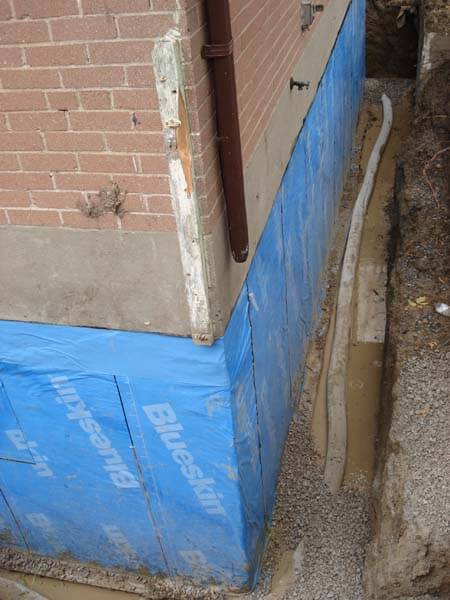Do-It-Yourself Waterproofing: Advice for the Weekend Project Planner
The process of waterproofing is a key aspect of residential and building maintenance that often gets overlooked until it's too late. As DIY enthusiasts, we take delight in tackling DIY projects that enhance the security and longevity of our homes. Understanding waterproofing is important not just for avoiding costly repairs but also for creating a comfortable home space. Whether it's your cellar, ceiling, or outdoor structures, the right waterproofing techniques can protect you thousands of bucks and safeguard your investment.
In this guide, we will explore all you need you need to know about waterproofing, including typical myths, the necessity of various applications, and the signs that suggest that your property may need waterproofing. We will also delve into the DIY versus contractor approaches, providing you with the information to make wise decisions that best suit your needs and financial plan. Let's prepare and ensure our homes remain dry and safe for decades to come.
The Importance of Waterproofing
Waterproofing is essential for all home and building as it delivers a solid barrier against moisture damage, which can result in major repairs and structural issues over time. High levels of moisture can deteriorate foundations, foster mold growth, and harm interior finishes. By investing in proper waterproofing measures, homeowners not only protect their homes but also provide a more conducive living environment without harmful mold and mildew.
Disregarding the need for waterproofing can result in expensive repairs that far outweigh the first investment in protective measures. Water damage can jeopardize the integrity of a building, leading to significant issues such as rotting wood, rusting metals, and unsightly stains on walls and ceilings. By diligently waterproofing various areas, such as basements, roofs, and bathrooms, property owners substantially reduce their long-term repair costs and improve their overall property value.
Furthermore, waterproofing plays a critical role in energy efficiency. dry basement -sealed building diminishes drafts and avoids water intrusion, which can lead to higher energy bills. In sustainable construction, effective waterproofing contributes to a building's lifespan and ability against environmental challenges. Utilizing waterproofing solutions is not just a defensive strategy; it is a preventative approach to maintaining the value and functionality of all property.
DIY Waterproofing Techniques
A highly effective DIY waterproofing techniques is utilizing a waterproof sealant to your cellar walls. Start by scrubbing the surface carefully to remove any grime, dust, or old paint. Once the surface is clear and dry, apply a top-notch waterproofing sealant with a brush. This will form a barrier that prevents moisture from infiltrating the walls, thus lowering the risk of fungus growth and water damage. Don't overlook to pay extra attention to any gaps or seams, as these areas are often the most susceptible.
Another useful technique is to focus on proper drainage around your property. Ensure that gutters and downspouts are functioning correctly and directing water away from your foundation. You can also set up a French drain or improve the grading of your yard to facilitate better water flow. By guiding rainwater away from your home, you greatly reduce the pressure on your foundation and decrease the chances of water leaking in. Consistent maintenance of your drainage systems is key to ensure continuous protection.

Finally, think about waterproofing your outdoor spaces, such as balconies and patios. Using a waterproof coating can extend the life of these areas and stop water damage. Look for products specifically created for outdoor use, and verify the surface is clean and dry before application. By taking these preemptive steps, you can shield your investment and create a sustainable living space, all while effectively engaging in DIY waterproofing.
Selecting the Best Waterproofing Solutions
Selecting the appropriate waterproofing solution for your building depends on various factors, like the specific areas that need protection, the local climate, and your budget. It's crucial to begin by assessing the most vulnerable areas, such as basements, restrooms, roofs, and foundations. Each area may require various items and techniques to properly prevent water intrusion and damage. Knowing the different types of waterproofing systems available, such as interior vs. exterior solutions, will guide you in making the best choice for your needs.
Once you have identified the areas of concern, investigate the various waterproofing products on the market. Look for coatings, membranes, sealers, and additives that fit your exact requirements. It's important to think about the longevity and effectiveness of these products, as well as any available warranties. User reviews and expert recommendations can provide valuable insight into the performance of different waterproofing solutions. Don't hesitate to consult professionals if you are unsure about the best option for your situation.
Finally, evaluate whether a DIY approach or employing a professional is the best path for your waterproofing project. While DIY solutions can save money and give you hands-on experience, they might not always yield the best results, especially for larger or very complicated jobs. On the other hand, professional services can ensure a thorough application and compliance with local building codes. Evaluating the pros and cons of each approach will assist you decide how to proceed, in the end leading to effective waterproofing that safeguards your property.